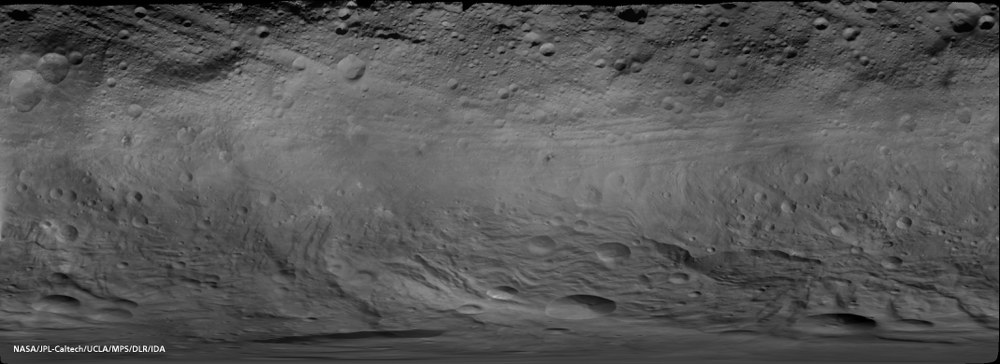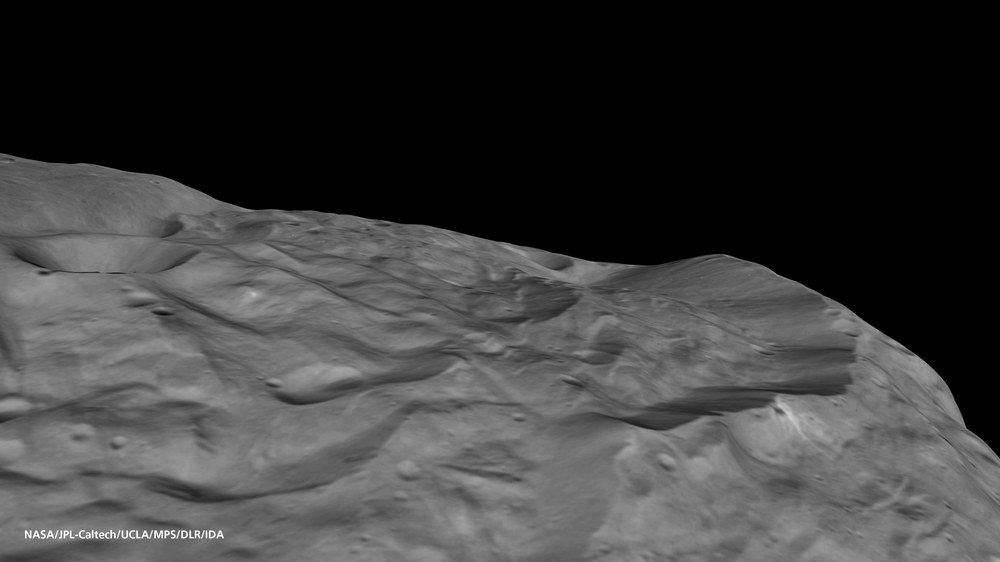Asteroids in 3D – data processing at DLR



The Framing Camera on board the Dawn spacecraft will acquire images of the surface of Vesta and Ceres from various perspectives and under changing light conditions. These images will then provide the basis for creating 3D models of the asteroids.
Three-dimensional images allow the scientists to analyse geological formations in detail. The exact three-dimensional survey of numerous craters of an asteroid is also exciting. On the basis of the shape and height of their edges, the scientists can work out the force of the impact, the mass of the projectile and the composition of the impacted area.
Main task of the DLR scientists: assigning precise coordinates to the Dawn image data and preparing high precision maps of Vesta and Ceres
The Max Planck Institute for Solar System Research provides the systematically corrected raw image data from the Framing Camera needed for further processing. From this, the DLR Institute of Planetary Research (today DLR Institute of Space Research) then creates the three-dimensional image products for the mapping and scientific study of Vesta and Ceres. The stereo software used for this purpose is thoroughly tested. It has been used for years in the three-dimensional mapping of the Moon, Mars and Mercury. All image data from the two 'Dawn asteroids' will be collected and stored at DLR and will subsequently be transferred to NASA's Planetary Data System (PDS).
For the three-dimensional image data processing, the DLR researchers use what is known as stereo photogrammetric methods. Photogrammetry uses information from at least two images of the same region of the asteroid, but taken from different perspectives. This stereo data is processed in such a way that elevation information can be derived for each pixel, which then allows the generation of a highly detailed three-dimensional terrain model. The information produced from these perspectives of the surface, which change with each orbit of the spacecraft, is taken into account and continuously improved during stereo processing. Here, the accuracy of the 3D model being created also depends on the high-precision calibration of the Framing Camera, which was carried out before the launch with great care. In the finished model, details with elevation differences of less then 10 metres can be shown.
The stereo software was subjected to a thorough test before its real-life application on Vesta. This was based on simulations of photos of the asteroid prepared by the NASA Jet Propulsion Laboratory from earlier blurry images of Vesta acquired by the Hubble Space Telescope. From these, DLR researchers were able to develop a corresponding virtual 3D model of the asteroid before Dawn's arrival at Vesta.
